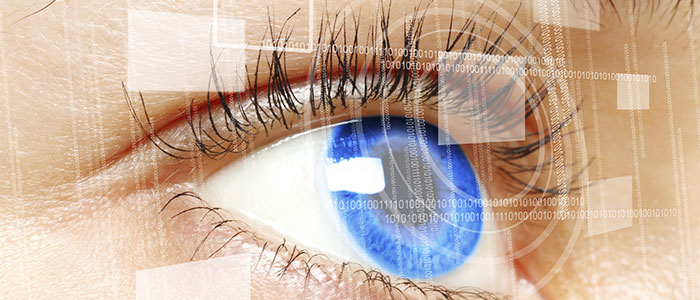
Many people can recall the 1980s song by Thomas Dolby, that includes the lyrics,
”She blinded me with science! And hit me with technology....”
In the 21st century, it seems that the blind can now “depend” on and anticipate science to restore vision.
Scientific advancement in the arena of neuroscience and medicine have given blind people hope that they never had before. The world of science and technology is providing inroads into greater opportunities in the advancement of sight restoration and retinal prosthetics with measured success.
Global statistics show nearly 40 million people are affected by some sort of blindness, with 15 million debilitated by AMD alone. The advancement of Age Related Macular Degeneration (AMD) has sparked new research options for the blind, paving the way to future bionic eye treatments. Using eyeglasses with a camera that transmits images to an electrode implanted in the retina, images and movement can be detected. The Argus II, a retinal prosthesis device, is already available in the US and European markets with FDA approval in the United States.
Making a bionic eye is trickier than you think. The implant must not only respond to light, but also transmit the light to the neural pathways in the brain in order to process the light and subsequent vision.
The way our vision should work, is that light and images are processed through the, “film of the camera”, per se, called the retina. The retina relies on photoreceptors called rods and cones that take the visual image and transfer it through neural pathways to the brain, which in turn processes the vision causing us to see light, color, and images. The pathways of vision are processed through the second cranial nerve, the optic nerve. Scientists are working to restore those pathways damaged by glaucoma, stroke, head injury, and retinal disease or damage.
Advancements in this technology can lend to improvements in locating or identifying objects, orientation and mobility, detecting light and making certain household tasks easier, like locating utensils.
Although this technology is in its infancy, results are promising......and who knows, maybe in the future the Thomas Dolby song will need to be sung as “She UN-blinded me with science.”
References:
1. “The Bionic Eye” The Scientist, October 2014
2. Jef Akst,”Retinal Film Detects Light” The Scientist, November 13, 2014
3. www.amd.org
The content of this blog cannot be reproduced or duplicated without the express written consent of Eye IQ.















